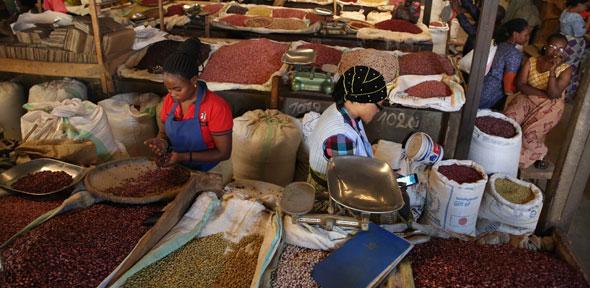
Wellcome Trust Investigator Award, 2020–2025
Many experts agree that the genetic diversity of agricultural crop plants is essential to food security, present and future. But how this diversity makes its way into agricultural production – for example as more disease-resistant or nutritious crops – is not well understood. This poses problems for scientific and political decision making.
Over a five-year period, the project From Collection to Cultivation will chart the histories of the different types of knowledge, labour, techniques and tools needed to transform plants gathered around the world into novel crop varieties destined for farms, markets and, eventually, dinner plates. Five researchers will develop new accounts of the contributions made by researchers engaged in plant exploration, introduction, conservation, and utilisation since the early 20th century. These studies will chart efforts to locate disease-resistant varieties, prevent the spread of crop pathogens, ensure access to dietary diversity, and locate the genes that give rise to nutrient-rich varieties.
By following neglected actors and methods, this research promises to change our understanding of how and by whom modern agricultural crops, and modern diets, have been made.
Principal Investigator: Helen Anne Curry
Key questions
From the early 20th century and with increasing intensity since the 1940s, genetic diversity has been made valuable through the workings of a massive and largely publicly funded system of crop development. In order to generate knowledge about the contributions of this system, the proposed project asks three key questions:
- What social, political, technical and environmental conditions have shaped institutions and infrastructures for the acquisition, management and use of crop genetic diversity since the early 20th century?
- What labour, knowledge, techniques and tools have been developed and deployed within these institutions and infrastructures so as to derive value from crop genetic diversity?
- How has the experience of food security at local, national and international scales been affected by this deployment of labour, knowledge, techniques and tools?
In answering these questions, the project considers a constellation of institutions and activities that centre on the management and international circulation of crop varieties. Key among these are plant introduction stations, seed storage facilities, and plant health protection organisations, as well as the network of international agricultural research centres established since the 1970s.
Methods
The project charts the history of crop diversity and its management not only through the development of the above-mentioned institutions (Key Question 1) but also the daily activities of researchers within and the movement of plants through these institutions. To achieve this goal, the project will:
- Document the scientific labour and tools to which plant varieties are subjected and which contribute to making crop diversity valuable. This method draws on a tradition in science studies that foregrounds working practices and tools in exploring how knowledge is made. Here, the approach will generate new understanding of the skills and resources needed to generate value for agricultural production from crop genetic diversity (Key Question 2).
- Follow plant materials through research institutions and systems to provide evidence of how crop diversity is used. This method draws on organism-centred approaches pioneered in environmental history but used by historians of science to reveal how research organisms, including crop varieties, are made. Here, the approach will generate knowledge about the material connections between crop diversity collected in the field and its eventual use in agricultural production (Key Question 3).
Through these approaches, the project will provide a rich account of how genetic diversity collected from a field site finds its way into cultivation as part of an improved crop variety.

Image credit: Luis Salazar/Crop Trust
